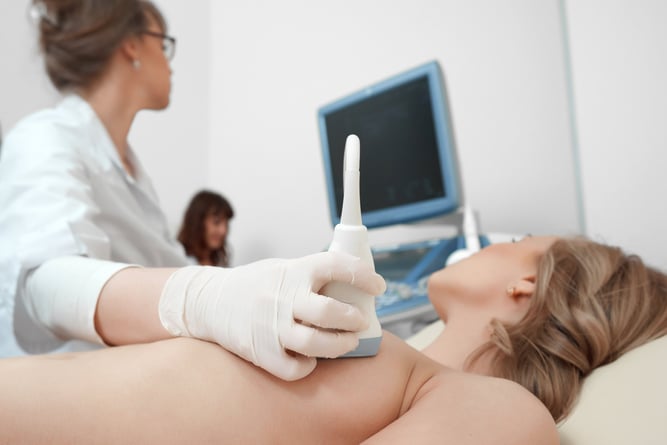Intraductal Papilloma
Understanding intraductal papilloma and its treatment options.
Intraductal papilloma is a benign (non-cancerous) tumor that forms in the milk ducts of the breast. While they are usually harmless, intraductal papillomas can cause unusual symptoms and may require monitoring or treatment. At Garden Mammography Center, we provide specialized services to help you understand and manage intraductal papilloma effectively at our Lake Success location.

What is Intraductal Papilloma?
Intraductal papillomas are small, wart-like growths that occur within the milk ducts of the breast. They are typically found in women aged 35 to 55 and are one of the most common causes of nipple discharge. These growths can occur singly or in clusters, and while they are usually benign, they can sometimes be associated with an increased risk of breast cancer. Intraductal papillomas are categorized into two types:
- Solitary Intraductal Papilloma: This type is a single growth that often presents with nipple discharge.
- Multiple Intraductal Papillomas: This type involves several growths and may cause more pronounced symptoms.
Symptoms of Intraductal Papilloma
Symptoms associated with intraductal papilloma can vary, but common signs include:
- Nipple Discharge: This is the most common symptom, which can be clear, bloody, or cloudy.
- Palpable Lump: Some women may feel a lump behind the nipple or in the breast tissue.
- Breast Pain or Tenderness: Discomfort in the breast may occur, particularly in the area of the papilloma.
If you experience any of these symptoms, it’s crucial to consult with a healthcare professional for a thorough evaluation.
Diagnosis and Treatment of Intraductal Papilloma
At Garden Mammography Center, we utilize advanced diagnostic techniques to evaluate intraductal papilloma. The diagnostic process may include:
- Mammography: This imaging test helps visualize the breast tissue and identify any abnormalities.
- Ultrasound: An ultrasound can provide more detailed images of the breast and help differentiate between solid masses and fluid-filled cysts.
- Biopsy: In some cases, a biopsy may be performed to confirm the diagnosis and assess the nature of the growth.
In terms of treatment, management options for intraductal papilloma depend on the symptoms and the individual patient's situation:
- Observation: If the papilloma is small and asymptomatic, it may simply be monitored with regular follow-ups.
- Microsurgical Removal: If the papilloma causes symptoms or there are concerns about its nature, surgical removal may be recommended.
- Regular Monitoring: Follow-up appointments are essential to ensure there are no changes in the condition.
Schedule Your Appointment
If you suspect you have breast cysts or are experiencing any concerning symptoms, please reach out to us at +1 516 663 6400 or visit our appointment booking page. At Garden Mammography Center, our dedicated team of professionals is here to provide you with the highest quality care and support. Your breast health is our priority, and we are committed to helping you navigate any concerns with compassion and expertise.


